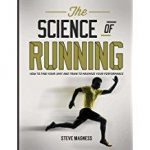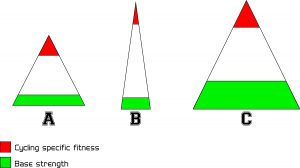Author Archives: kendaltri
Escape from the snow – Joe Beer Triathlon Training Camp.
~ by Paddy Finn
8th – 13th February 2019. Venue: Club La Santa.
It was with some trepidation I decided to go on this training camp. When I initially signed up, I envisaged a successful heart procedure and a gradual recovery to get me close to my fitness level of September 2017.
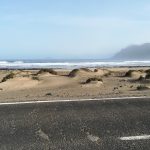
As many of you know, it has not been a straightforward journey. Even so, the thought of twenty degree heat, sunshine and an amazing choice of activities in February swayed me to go ahead
anyway. I messaged Joe Beer and he said I could do as much as I liked, and I would get lots out of just by being there.
Joe’s training philosophy is summed up in 80/20. 80% of your training should be in the aerobic zone (55-80% of maximum heart rate), 20% over your aerobic threshold. As an athlete who always felt that training should feel like you are working hard, on or near my aerobic threshold, this has been a new approach for me to adopt. Seeing is believing.
Minus four, surrounded by snow and ice, we headed off for Liverpool airport. So, a four hour flight to Arecife in Lanzarote and back to the special place that is Club LA Santa. Here exercise and activities are the norm, where the three outdoor 8 lane 50m pools are often buzzing to the sound of international swimmers enjoying their spring training camp. Ironman tattoos are commonplace, I did spot a few Olympic Rings tattoos, and the individuals looked like they had earned them! You can do almost any activity you can imagine, and mostly they are included in the price of the accommodation.
We had the welcome session on the first morning and my take away was, ‘you do as much as you wish, don’t smash it in the first couple of days, because the programme is six days long, and if you drop a session or two, no problem, join in when you are ready.’ That suited me.
For the swimming sessions we had six lanes for 30 swimmers, I was in lane two, the second slowest, with a group of similarly paced swimmers. There were four coaches headed up by Dan Bullock, of ‘Swim For Tri.’ I chatted to Dan a lot, he is a great guy. Masters swim champion for several years, a collegiate swimmer in the states and in the GB squad for the Games, but just missed out. He has a coaching style that identifies the one improvement he wants you to make, explains it simply, repeats it and it works. Our last swim session of an hour and a half was 3k, including a 20 x 50m set, where each 50m we were asked to focus on one key aspect of technique. He managed to time the 50m for three lanes, and the seconds kept falling away until the 13/14 th 50m……. Anyone who wanted to could have a short video of their swimming, from above and underwater. Dan reviewed this later, and made one comment per swimmer on how they could improve, for me it was head position.
There were other improvements he identified for me, which I am now working on. There were a couple of inputs, which I found helped put in context what we were doing, and helped cement the learning. Clear messages; Consistency of training, gradual improvement, the importance of rest and recovery and the importance of feeding. I took the feeding information to heart, making sure every 20 – 30 minutes on the bike I ate something, drank frequently and stole Kath’s electrolyte powder and Jelly Babies. It worked.
I was concerned about the biking. I know I struggle to keep up on the hills. This is a great dent to my pride, but I also did not want to hold people up. We had 4 groups, I was in group 4, I was nearly the slowest in the group up the hills. I explained my health issue, and my group were amazingly supportive. They would go at a reasonable pace, I could keep up on the flat and was the fastest and most confident going downhill, but uphill, they would gather at the top, then without fail congratulate me on getting there. They insisted I come on the four hour ride, with a long climb. I joined them, and when I did eventually reach the summit of Mirador, I was greeted as if I had just won the hill climb! I was some minutes behind the group. Mind you, I skinned them going down!
I did see the other groups on the road, they were going at an appropriate pace for their ability, which I can only dream of. But they seemed to be having a grand old time. One day it was very
windy, so the biking was cancelled and we had a spinning session. This focussed on cadence, pedalling technique and breathing on the bike, much easier than practising on the road. More improvements to adopt.
The running sessions were relatively easy, lots of drills, including some breathing drills which I had not come across before. By coincidence I am now reading a yoga book, that describes the same technique, watch this space for another one-off session for the tri club. The big take-aways for me were, run on soft surfaces, warm up slowly, use practice drills (just as you would swimming), jog/walks are good, keep your heart rate in the lower range (55-80%), practice nose breathing (possibly another session). Used regularly, it helps you become more efficient at respiration at lower effort levels, that transfers to harder efforts when they become necessary, racing!
I did not do every session. But the two I missed, I did something similar, if not a bit shorter, a bike ride of an hour instead of an hour and a half, and a jogging session on my own on the grass instead of a 30 minute run on the road. Everything else I did, including the ‘mini tri’. I have never got so much pleasure from completing an event.
Was it worth it? Absolutely, definitely. I feel mentally and physically stronger. I am clear about my current level of fitness and I am at last comfortable with that reality. I did 21 hours of exercise in six days, and felt fine. I have completed my first tri in over 17 months. I have met some great people, both coaches and participants and hope to see them again. The venue just makes it easy to do stuff, facilities, weather, restaurants, CLS staff. I am planning on returning next year, by then I hope my fitness will have improved and who knows I may move up a group!
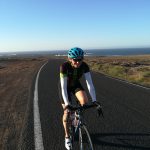
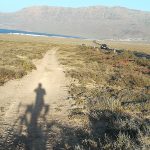
https://www.clublasanta.com/en/sports/events/spring-triathlon-camp/spring-triathlon-camp
What’s your dream? (or “How do you keep yourself going for 24 hours and what do you think about?”)
~ by Angela White
I have been invited to write about my recent experiences of pushing the distance over 24 hours running. In particular, to answer the question, “How do you keep yourself going for 24 hours and what do you think about?”
Undertaking any endurance activity is tougher mentally than it is on the body. I used to think 60:40 but now feel it’s more like 70:30. I discovered the sport six years ago and initially, for me, it was more about walking than running. It is a fascinating and revealing learning experience in which I still consider myself to be something of a novice. Each event gives me more information about myself and how I respond to the physical, mental and emotional challenges that it offers. Practically, that means that I can find myself re-framing many aspects of my approach to, and participation in, the next challenge.
Setting out on an event, my main objectives are to get to my destination quickly, safely and in the ‘best condition’ possible. The ‘best condition’ to me means that I am not totally dehydrated or underfed and, crucially, that I conduct myself in a way that enables my body to recover quickly afterwards. Each event itself is training and building upon what has gone before, and focusing on optimising recovery should, in my view, be as an important a part of the plan as running a good race.
This requires considerable preparation and planning beforehand. During the event, it takes a variety of skills, concentration and drawing upon a wide array of cognitive abilities.
As with any other mode of transport, running requires that you know your destination and your route to get there. You need to have enough fuel and water in the tank and a good idea of your rate of consumption and a plan as to how and when to fill up. Knowing where the ascents and descents are and having an idea at which point in the event you will need to tackle them is also helpful.
Alongside these basics is the need to manage temperature regulation. One thing I have learned is that, once I become fatigued, I don’t manage the cold and I have suffered from hypothermia on more than one occasion. In addition, well before that occurs, my leg muscles, particularly the iliotibial band and around the hip, stiffen and adversely affect my gait.
I’m therefore dividing my attention between a lot of factors and that’s before I’m looking at the detail of the road or trail surface to dodge potholes, rabbit holes, innocent-looking protruding rocks, puddles and piles of leaves covering hazards for the unwary to say nothing of being shocked and astounded at the behaviours and antics of other road users! These all present a need for constant visual attention and scanning of my immediate and upcoming environment both for navigation but as part of a need to rapidly process information on hazards to react quickly enough to avoid them. Developing good foot-eye coordination is also not to be underestimated.
Running on roads, in particular, places demands on auditory input and spatial awareness. Listening out for vehicles approaching from behind and making judgements on their proximity and speed and whether they have seen you and are taking care to modify their driving to respect you as a fellow road user. I am challenged by this as I am profoundly deaf in one ear having suffered from sensorineural deafness one afternoon seven years ago. Not only does this mono-hearing mean that I am unable to pinpoint the direction a noise is coming from but, it also left me with severe tinnitus on that side which is activated proportionately to constant noise such as wind, water, traffic, and conversation. This can become so loud that it masks the noises coming into my good ear and effectively renders me totally deaf.
Performing these functions for the most part occupy my thinking throughout each event. They feed into an outline plan for the event and dynamically modify it according to how the race unfolds.
Escape from Meriden, EFM
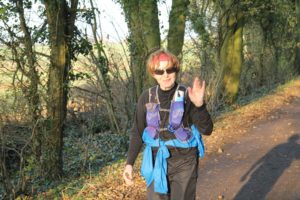
At midnight on Friday 17th November I commenced the last of a triad of 24 hour races in three months. This was Escape from Meriden.

In each of the first and second of these I had achieved over 90 miles but had finished each with some very nasty, painful blistering which had started some hours prior to the end. Unsurprisingly this had slowed me considerably. How do you deal with such things? It’s an issue I am still trying to work out and it is not very scientific. I have tried different shoes and a variety of cushioning and taping measures. I’ve spent a fortune on podiatrist and orthotics. The big challenge is testing what works as this can only be done by going out and running another very long way which, of course, you just don’t do in training. So essentially it is only during the next race when you find out whether something works – or not.
EFM is an event where you choose your own route. You have 24 hours to get as far from Meriden, the centre of England as you can, on foot. However, your final distance is measured as the crow flies so one needs to be as efficient as possible with route choice. My strategy was to head for a roman road and stick to that, hence the Fosse Way to the southwest was my plan.
Over a hundred competitors lit up like Christmas trees with a variety of head torches, bike lights and glow bands the colours of the rainbow gathered at the 500 year-old cross in Meriden excitedly awaiting the start. It was drizzling, the sort of wet that clings and penetrates slowly over time so you don’t appreciate how wet you’re getting. At the race director’s shout we were off, heading in multiple directions from the cross, many sprinting as if their life depended upon it. Finger on my Garmin, I pressed start to record my run but also to provide crucial feedback to guide me through it.
My next thought was to remind myself that I have a long way to go, ignore the pack. If anyone is on your route, you’ll be seeing them soon enough. I do a quick systems check: are my shoes and clothes comfortable, anything twisted or rubbing, head-torch giving me optimum view of the road surface. I check my race vest pockets, map top left, fluid top right, zips definitely closed. Check the map, right turn coming up and, yes about a mile along here I’ll meet the crew. This is a self-supporting event and you are allowed to have folks help you along the way. I was fortunate to have a series of three family members who would each leap frog me along my route. I had given each of them a set of marked maps, a provisional timing schedule together with what I thought I would need and where.
My Garmin vibrated on my left wrist alerting me to completion of the first mile. This was my cue to walk for a minute whilst drinking. I have employed this tactic a number of times and find it useful in long events to make sure I give time to hydration and fuelling but also a brief period to flush out toxic metabolites from the legs. I also believe an intermittent change of gait helps minimise complications of repetitive stress injuries such as anterior tibial tendinitis, suffered by so many endurance runners.
I passed the crew with a brief acknowledgement that all was well and that I’d see them at the next stop in five miles. Map in hand, I check the nav and took the next right turn and headed into the darkened lane. Most runners had dispersed and there were just four sets of flashing lights bobbing along the road ahead of me. From the map I was expecting to cross a railway line, and there it was, followed by roundabout and then turn left onto a lit road through a village. I was on this for a mile so switched my head torch off taking advantage of the street lighting to save battery.
As my Garmin buzzed for my attention I walked, ate and drank my way along. When running I tried to keep my pace to between 10 and 12 minute miles. I had a long way to go. The road surface was wet, lots of leaves, bad cambers, try to keep to the middle, fortunately not a lot of traffic in the lanes. Plenty of noise to sharpen the senses, rain drops from the trees on my jacket hood, scurrying of small animals in hedges whose nocturnal hunting I had disturbed and larger animals in fields who didn’t seem particularly alarmed by a mad human running by in the night.
I was aware it was cold, around 3 degrees and welcomed the hot chocolate the crew handed me along with a snack bar when we next met. I walked along drinking it. Every stationary moment might be rued in the final analysis should you have not optimised these transition times. As they drove at my pace past me ten minutes later I was again running and simply dropped the mug through the vehicle window.
My mind is constantly watching the nav, looking at the road surface and being aware of the environment to manage hazard avoidance, responding to my watch to fuel and hydrate and checking pace. 25 miles in and I was asked when I’d like my porridge to which I replied at the bottom of the next hill. A further mile on and I gladly accepted a hot porridge pot which I ate while slowly climbing the hill and handing the pot back as the crew passed me. The next stop was to be a handover between two crews.
My watch told me I was ahead of time by up to 30 minutes. Was this good or bad? I decided it was equivocal. 30 miles in 5 hours 30 minutes was ok at this stage. However, things can change rapidly. Within minutes as I climbed higher into the Cotswolds, the drizzly mist turned to thick freezing fog and visibility was reduced to just two or three feet. A systems check identified my legs around hips and thighs were rapidly stiffening and felt cold. I pushed on up the hill whilst planning what I needed from the crew to deal with this change of weather.
I was pleased to see my two crews had met up and I jumped into the awaiting van. I started to strip off my upper layers whilst asking for a very specific change of clothes and waterproofs. Another hot chocolate was ready and I took a few sips. With the luxury of dry baselayers, a warm mid layer and waterproof legs and jacket I quickly headed out with my hot chocolate and with the crew saying they’d keep closer during this weather.
The diffusion and distortion of the light from my head torch into the dense fog was disorientating and there was nothing for it but to walk carefully for two hours until night turned to day and I could see my way more clearly.
During this time I was calculating the impact that my slowed pace could have on the final outcome and what, if anything I could do to make up for lost time when I was running again, and came up with a plan.
As the daylight progressed, the fog was replaced by glorious autumnal sunshine which proudly displayed the next twenty miles of thoroughly enjoyable ‘undulating’ Cotswold countryside, looking every bit the 19th century oil painting, unspoiled by time.
As I warmed through I discarded my layers. I also deployed my plan, a ‘secret weapon’ I had been looking for an opportunity to try out. This was a caffeine shot made from concentrated green tea extract. I was interested to see the results. I had made sure to eat plenty during my enforced walk so I had ready calories to burn. I was pleasantly surprised by the results. I had expected a seriously high spike in energy and activity and a possible rapid burn out; instead it was more of a persistent gentle boost which saw me running steadily through this beautiful landscape all the while feeling how lucky I was and how alive I felt at that moment. I reached Compton Abdale, the fifty-mile point at 10am which meant I had regained my hopeful schedule. Furthermore, I was through the other side of Cirencester an hour up.
Fortunately, crew number three had been tracking progress and had headed up to take over from number two at Kemble in time for my arrival.
Things were beginning to hurt a bit now too. I tried to change shoes for the off-road Fosseway but my feet objected. I therefore moved straight into my second pair of road shoes which were a size bigger and different make with a wider toebox. It was a rather slower traverse of the Fosseway through to The Gib and into the second night. I had already blistered and taken a few minutes out to deal with the problem but I was taking a bit of time to adapt to the discomfort. The bitter wind did its best to be my undoing but my thermoregulation was well awry. Hardly surprising as by now I had been awake for 34 hours. However, rather than the usual hypothermia, I felt I was burning up so the cold was, in part, welcome.
A friend in the south had come out and cycled alongside for a few hours. It seemed rude not to try and move a bit more quickly as it was jolly cold and he was on the brakes going down the hills. I had another plan to use the secret weapon again but before I could allow myself to do that I needed to take some painkillers else I knew it would really hurt! I worked out what time I needed to take everything and to eat enough.
My aim, you see was not just to make the 24 hours but to reach 100 miles in that time. This was the first time in the whole race that I began to believe it might really be possible. I remained cautiously optimistic and focused on putting one foot in front of the other.
I picked up the pace on the steep descent into Bath and met up with the crew. A few seconds to do what was needed and then straight off again. Would it work again? Was I asking too much after this time awake?
“How long does it take to work?” Asked my friend. I wasn’t sure but started to run again. I know Bath well and didn’t need maps now. I discarded everything apart from base clothing and the tracker which I carried in my hand. What followed was an exciting caffeine-fuelled sprint across the city. I knew this would be my last chance to pick up speed and miles. I heard him say “Gosh, you’re rattling along”, and looking down at my watch I noted my pace was 8 mins 50 seconds. Just how is that possible when you’ve been up for 36 hours and in which you’ve run over 90 miles in the last 20 hours?
South of Bath, ahead on my route, were some hills which would prove a final test. My cyclist friend is the best company on these events, well experienced in endurance sports and has run with me on many occasions. He departed the far side of Bath after the first and biggest ascent with aching wrists but the knowledge he’d given me a huge morale boost.
I had nothing left to plan, I was not going to take any risks with my health with artificial stimulants – they’d proven their worth. I also wanted to sleep at the end of this.
A hundred was in sight but it was to be a battle. Mind over matter. I desperately wanted to sleep now, just to slump to the ground where I was and shut my eyes. It was so very hard. With next to nothing left in the tank physically and an enormous struggle mentally I forged my way onwards and upwards…….and down ……and up….. getting slower and slower…….mindful of each and every one of the 0.01 miles ticking up laboriously on my watch, and painfully in my being.
My son accompanied me on those last miles distracting me by reading out the many lovely and encouraging comments that friends had made on social media. I still wanted to sleep but my one thought was to get across that 100 mile barrier. “Are we there yet?”, he asked, I denied it and made sure that we continued to a bit beyond. The last thing I wanted was for Garmin to recalculate my route during its upload and take any of my hard earned century away from me.
In the final analysis I achieved my personal objective and ran 100.2 miles with 6,332 feet of ascent. So far as the race itself is concerned, I covered 87.26 miles as the crow flew that night, came first lady, fifth overall and gained the Duke of York trophy for the most ascent.
![]()
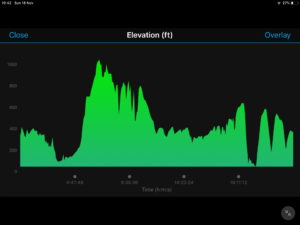
There are highs and lows, deep dark lows, in any event but no matter how low it feels at the time, it’s just pain, or fatigue and it will pass whilst your achievement is there forever. Re-frame each and every physical struggle mentally and it will help you over it. It is rare in an event like this that there is nothing connected with the event to think about or to admire around me. On really tough physical bits I count and do maths problems. Sometimes the maths becomes quite complex and I don’t remember what the original question was but the point is, it doesn’t matter as it got me up that mountain, it gave the painkillers time to work, it took my mind off the weather or, for me, that scary bit of exposed mountainside.
I found this sport late in life but I think I’m more alive now than I’ve ever been. I’m curious as to just what is possible. It has taken a huge amount of hard work. I’ve had many disappointments, broken bones and very low points. I have also met some lovely people and made some great like-minded friends. I’ve met and know some very remarkable people, all who’ve worked to achieve their own ‘impossible’. In a few short years I have pushed my own boundaries well beyond my imagination – despite loud protestations from well-meaning friends. Never put limits on your dreams nor let anyone else do so for you. If I had listened to them, I wouldn’t be living life now.
“You’re never too old to set a new goal or dream a new dream” said C. S. Lewis
What’s your dream?
Thank you for reading and I’d love to hear what strategies you use to keep you going.
Angela White
December 2018
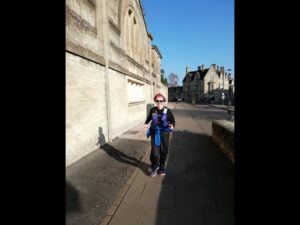
10 Christmas Present Ideas for Triathletes
1. Kendal Tri Club Hoody / T – Shirt

https://www.conistonshop.com/Kendal-Tri-Club-Seniors_295/shop/index.php
2. Sports Laces – £8.85 (£5 with club discount)

Extensively used and endorsed by the amazingly speedy Chris Stirling.
3. Swim Tempo Trainer – £32 – £34

https://shop.swimsmooth.com/products/finis-tempo-trainer-pro
A great piece of kit to help you keep focused during training sessions
4. Swim Fins – Approx. £20

https://shop.swimsmooth.com/products/finis-floating-fins
These fins help develop ankle flexibility and are invaluable when performing technical drills
5. Swim Paddles – Approx. £14

https://shop.swimsmooth.com/collections/paddles/products/finis-freestyler-paddles
These are the best paddles to have to help improve your hand entry and alignment in the water
6. Learn to Swim Front Crawl DVD – Approx. £30
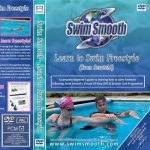
https://shop.swimsmooth.com/products/swim-smooth-learn-to-swim-program-dvd
7. Medal Hangers – £20 – £35
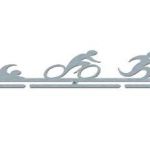
https://www.themedalhangershop.co.uk/product-category/tri-cycling-multi-sports/
Somewhere to put all your bling
8. Book: Roar – £7.50 – £15.99

https://www.amazon.co.uk/Roar-Stacy-Sims/dp/1623366860
ROAR provides Women with training and nutrition advice to build a rock-solid fitness foundation. Using what she calls “getting fit to get fit,”
9. Book: The Science of Running – £9.99 – £18
10. Kendal Tri Club Kit (Range from £45 – £110)

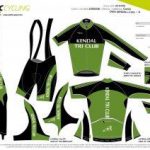
https://www.kendaltri.co.uk/club-kit/
Our kit ordering “window” opens early in the new year, so you could give your loved ones some money towards some nice new club kit
Jurassicman DNF
~ by Nat
I’ve been enjoying life as part of Kendal Tri for a few years now, and I generally respond well to a bit of a challenge. I first did Kendal Sprint four years ago, the day after my first century ride (Wiggle’s Yorkshire sportive). I then got to know Chris and Sarah Ruston; Chris convinced me my next tri should be “A Day in the Lakes”, a hilly half-iron (pre storm Desmond so Kirkstone and Shap were still in the route)… a tough but enjoyable challenge and I was hooked.
Jump forward to 2018 and I was harbouring a secret challenge. Spring went well. I was regularly enjoying hilly runs, gradually upping the distance; also hitting quite a few hills on the bike, on and off road. I generally enter the Wheelbase Spring classic and this year was no exception, the difference being that this year I got stronger as the day went on. My next challenge was the Lakeland Loop; longer, more climbing, and finished with Hardknot, Wrynose, and Blea Tarn. Another successful day out. A few people started asking what I was training towards; I told everyone I was training for Struggle Dales (107miles with nearly 11’000ft of up) and my Coniston Trail Marathon (my first marathon)…this was the truth, but not the whole truth. I’d also signed up for Jurassicman, a full iron-distance sufferfest on the Jurassic coast!
Struggle Dales and Coniston Marathon were on consecutive weekends at the end of May / start of June. Hot, hard, and thoroughly enjoyable. While both of these events took a lot out of me neither of them totally wiped me out. I took a little confidence from this for my ‘big secret’, had a couple of easier weeks, then started building the training back up.
July I had some different work to normal, two weeks supporting an English coast-to-coast for a National Geographic holiday group. I enjoy the work, but it meant two weeks away from my normal routine, two weeks of loading and unloading large suitcases into a minibus, two weeks of very soft beds, two weeks without any floorspace for doing my daily core-strength stuff. Day 8 of 13 I had a bit of a back twinge, but I told myself it was only minor. Day 10 another, a little worse. Day 13 I got home; tired, sore and a little concerned as race day was just over 4 weeks away. Over the next couple of days I discovered that any running or biking aggravated my back, my final couple of “peak” training weeks were a write-off.
To put a little back story on this. I’ve had intermittent back issues all my adult life, since a serious hip injury in my late teens. I generally manage it through a mixture of core strength work and the superb team at Body Rehab.
I spent the next few weeks basically s****ing myself about the race. Not training…but trying to resolve my stiff and twinging back; but also had several depressed days of comfort eating. Mid-August came round, and despite feeling nervous and unfit I decided that I had to at least give it a go; I would have regretted not trying.
Friday 17th I headed south. Saturday 18th I arrived at race HQ (a campsite) and checked in. I had a little walk, checked my kit (yet again), deposited the appropriately labelled bags with the right people, and cooked dinner. I chatted to some of my fellow racers, great people, then headed to bed ready for the stupidly early start. The howling storm outside didn’t exactly aid a restful night.
Sunday 19th: up, breakfast, dressed, final prep, 2nd breakfast, then head for the minibus…all before dawn. The logistics that Brutal Events provide are excellent, as is their whole team. We were shuttled down to Budleigh Salterton for the race briefing where we saw the effects of the previous couple of days of wind. Apparently some people withdrew from race after looking at the sea (they’re the sensible ones), undoubtedly the roughest water I’ve ever swam in and the colour of red house bricks with all the churned up sediment. The course was changed slightly to make it easier to manage for the safety cover. Out through the huge waves to the first bouy, 90degree turn, then 6 laps of a lateral out/back parallel to the beach. Swimming was an erratic affair to say the least, I don’t think I linked more than two “normal” strokes together in the entire 2.4miles. While being tumbled back towards the beach after my 6th lap I vomited for a third time, and felt my back spasming as I did so. I landed next to startled looking marshall who checked I was ok before helping me to my feet and pointing me up the beach. 1hr33min, I’d hoped for around 1hr20 in good water so was fairly happy with that. I took my time in T1 knowing that I had a long day ahead. I spoke to some other racers, who all agreed that we’d just survived the most epic swim of our lives; I even did a few stretches to check my back out before heading out.
The Jurassic coast may not have any mountains, but it certainly has steep roads. The 112miles to Swanage has over 8’600ft of climbing on them, all of which I’d ridden in May so I knew what to expect. Aware of my back I did a few sums, and came up with an average speed that would get me into T2 with about an hour to spare (figuring I would use up some of that time at the feed stations, and the rest was saved for mechanicals / unexpected issues). The harshest climbs all come in the first 40 miles and a group of around 7 or 8 of us all kept leap frogging each other depending on where our strengths lay. The first feed station came after a few climbs and I was spinning along nicely. 60something miles in and my back had another little twinge, I stood in the pedals and moved my back around as best I could, then settled back in. After that each incline got slower, and more painful. The 500ft climb out of Portesham at around 70miles had my back screaming, but knowing that after that climb it was a gentle descent to the next feed station at 77miles I figured push on and deal with it there.
I rolled into the feed station in agony, and struggling to breathe. Unclipped my left foot, couldn’t unclip my right. The two guys at the feed station were awesome. They helped me off my bike, at which point I looked like I had scoliosis with my chest pulled a considerable distance to the right by the spasms. They very kindly and gently told me my day was over (although I guess I already knew), and kept me warm and fed while sorting transport out and contacting the organisers. I was gutted, but I always knew it was a gamble. I was even more disappointed because this years Jurassicman was advertised as being the final one, no second chances.
I can’t speak highly enough about all the organisers / marshalls / etc at Brutal events. I was so well looked after. I was taken to the finish (a village hall) re-united with my spare clothing, fed and watered, and frequently checked on (including being offered a lift to hospital, which I refused, it’s not the first time I’ve been through this sort of thing…although it’s not often I get a couple of inches out of alignment).
Nearly two months later I’m still dealing with the aftermath; some days I’m feeling strong, other days I need to do several rounds of exercises and it takes 20minutes to put my socks on. It’s certainly been a season of mixed fortunes. But now is the important bit… Assess, learn, apply.
Positives:
I’ve learnt to love hills, on the bike & on foot.
I’ve learnt how to fuel myself correctly.
I’ve discovered I can train for 100+ mile hilly rides and hilly marathons at the same time.
Making changes:
Moving forward I’ll be keeping Yoga and strength training in my programme all year round.
Tips:
Learn what your body needs, and make opportunities not excuses.
Never ignore a niggle.
On an additional note. I’ve recently discovered that Jurassicman will return in 2020…..Who fancies a challenge?
TriMark Accreditation
After much hard work it is a great result for us as a club to be able to state that we are TriMark Bronze accredited!! But what does this mean? Well take a look at our certificate!! If it was ever in doubt this is to certify what an amazing club we are all part of!!!
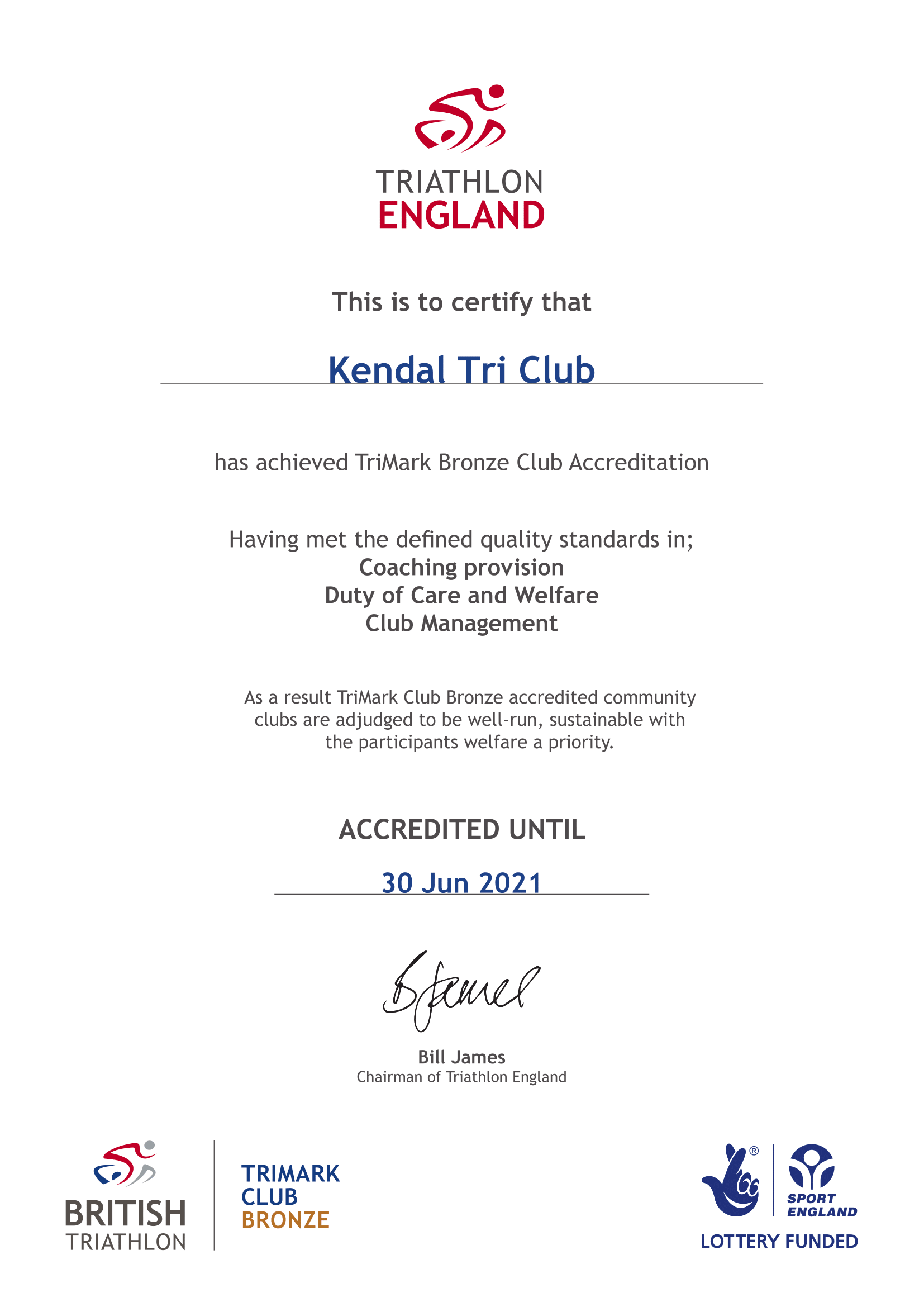
And just why noTT?
First time trial? Why not give it a go?
What is the worst that could happen? The usual excuses thrown at me don’t hold water here. You won’t hold anyone up, or cause anyone else to crash or get tailed off. It is a test purely of yourself against the clock – known as ‘The Race of Truth’.
Why do them? They have lots of benefits. They are a great way of measuring your progress with fitness, they provide very good focused training opportunities and they are excellent as sessions to think about your technique. Most people think you just get on and ride a bike, done it from childhood, simple. It really isn’t quite that simple. I rode faster than someone the other day who is stronger
than me and should be faster. Better technique, position and pedalling efficiency brought me in several minutes in front.
‘So what?’ you may say if you are not competitive. But more efficiency means more miles for less effort and less risk of
injury. So whatever you fancy doing, it is a benefit. Touring or tea shop visiting are two worthy examples I can think of.
Why not do them? They do tend to be hard work! ….. and a bit of a dark art. I can demystify the dark art but you have to do the work!
There are two places which make ideal starter routes locally. Both are run regularly so you can see improvements. One is ‘The Milnthorpe 10’ which goes from Milnthorpe to just before the Pine Lake roundabout and back, on the A6. This is organised by Kent Valley Road Club. The dates are on their website but this route is run regularly throughout the season from April to the end of August
on a Wednesday.
There is one on a Thursday from April to the autumn at Salt Ayre Circuit in Lancaster. This is a 0.8 loop of tarmac with no traffic and you ride it 12.5 times non stop. The hardest part is counting your laps but if you get it wrong you won’t be alone.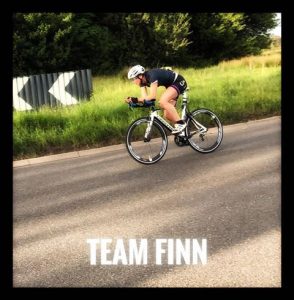
So you’ve decided to do one, chosen it and now you need to enter. For the Milnthorpe 10 you phone Giant store, 01539 728057, after 12 noon the day of the time trial and put your name down, first start time 7pm. After that people are set off at one minute intervals.
Next turn up – what do you need to take? You will see all kinds of funny kit at some time trials but to start with a bike, helmet and working back light are good. Money for the entry fee, £3. And possibly a tool kit unless you want to walk home if you puncture.
When you get there you have to sign on – for Milnthorpe this is in the car park after the lights, going towards Carnforth, opposite the Spar. Sign on is normally the back of a van. Take £3 and sign your life away …… In exchange for this Tony Dixon, who is normally sign on man, will give you a number with four safety pins – and if you are really lucky, a smile. :) The number is the number of minutes past the hour that is your start time. If you are 18 you are going at 7.18.
The number needs to go on your back, low down so that when you are bent over on your bike it is easy to see. If it is too high recorders can’t read it. It can also make it easier to read if it is slightly to the left of centre. If you receive the number 13 put it on upside down so that the bad luck drains out. Honest. Even if you do have your number on correctly please also shout your number as you
come over the line – if you have enough breath. This makes the time keeper’s job just that bit easier.
After this, it pays to do a warm up. Go and ride for 20 minutes at a variety of paces, raising your heart rate, encouraging your nerves to fire properly and your muscles to wake up. For Milnthorpe do this by going from the car park to the main traffic lights, turning left then turning right just before the bridge over the river. This will bring you to ‘the flats’ where you may well find others doing the same thing. Or bring a turbo trainer and a spare wheel and warm up in the car park. You are asked not to warm up on the course as it creates confusion. Make sure you are back about five minutes before your start time. Too early and your warm up will lose its efficiency. Too late and you will be in the doghouse and may not get a ride. Considering the sport revolves around precise timings, and improvements of seconds are greeted with great glee, being late is a bit of a faux pau. I have managed to persuade officials to alter my start time before but it is not a popular move – be warned.
[perfectpullquote align=”full” bordertop=”false” cite=”” link=”” color=”” class=”” size=””]But remember the sods law of cycling that the wind will always be a head wind when you are tired and just accept it![/perfectpullquote]
Make sure you are in a gear suitable to use from a standing start. Its a common error to have incorrect gearing at the start. It is better to have an easier gear than one which is too hard. A hard one uses more energy – and you’ll need that. The start is out of the car park and turn right, about 50 yards away. Normally there is a small huddle of three people. There must be two – one to record your start time, the other to hold you up. This is a bit weird. They will call you forward after the person in front has gone. Its worth getting there a little early to see how the start is done. Go up to the start point and, with about 30 seconds to go, you get on your bike and someone holds the seat post, or saddle, and top tube so you are held upright and can put your feet on the pedals or clip in if you have cleats. This means you are ready to start as soon as they say so. You will get a count down and the clock is in the grass in front of you so you can see the countdown. Tell the starters that its your first time and they will then know to reassure you! If you don’t feel comfortable just ask them not to hold you and that’s fine. Then just pedal! Try not to start too fast and flood your body with lactate within the first half mile. Get into a rhythm you can sustain for about half an hour. Get down on your drops. If you don’t normally ride on them it may pay to practice a bit first. This will make you more aerodynamic. As you come up to the turn point there will be a marshal waving. The turn involves being in the fast lane of the dual carriageway then doing a right handed u turn. You have to give way to traffic, but there usually isn’t any. The turn point also means you are half way. and that you expect that head wind to become a tail wind. But remember the sods law of cycling that the wind will always be a head wind when you are tired and just accept it!
Then pedal back to the finish – simple! Volunteers will record your time and that’s it. You have done your first time trial. Congratulations.
Remember to give your number back at the van and sign off. This means re-signing the sign-on sheet to let people know you finished safely. Then go for an easy ride for 20 minutes or so to spin your legs out and help them remove some of the waste produced by your efforts. Sometimes you can see the results on the night, but they are swiftly published
on facebook and web pages.
Good luck, enjoy!
Apples have cores, not cyclists!
Having recently finished my first stint as Spin Coach I have thoroughly enjoyed reading about, planning and delivering the various sessions. In the most part sessions are generally focused on speed and/or strength with an underlying theme on how that is developed.
In looking through many an article I came across one on British Cycling that discussed stability and strength. As those of you that have been part of my recent sessions will attest to I bang on about engaging you core and lower back to promote stability and reduce pressure through your shoulders, arms and wrists.
In a somewhat “buzzword” style British Cycling have moved away from this trend of Core Stability and have almost re-branded it as Functional Trunk Strength and Robustness. The gist of this can be seen in the diagram above. Basically, the red tip is your cycling specific fitness and the green base your relevant strength (A). If you were to focus solely on your bike fitness your point would be higher but your base would remain largely unchanged – this creates a tall thin pyramid which could quite easily topple (B) and toppling translates to poor recovery and even injury. If you include some relevant strength exercises you build a much bigger, wider & stonger base from which your cycling fitness can grow (C) – this wide, sturdy base not only represents you being stronger but also the ability to recover and stave off injury too.
Functional Trunk Strength = Cycling Specific Strength
Robustness = Capacity to absorb training and prevent injury
So what should I be doing?? Well, a quick Google will reveal an endless list of Planks, Side Planks, Squats, Weighted Exercises blah, blah, blah, blah. Now you could subscribe to a complicated list of exercises that, yes will no doubt benefit you, but may not be directly aiding your cycling specific strength. However, you could also approach one of the Club’s Level 2 coaches that are both personal trainers, Jane also being a fitness instructor and Paddy British Cycling Level 2 coach.
Whatever, you choose to do make sure you seek professional advice first as any exercise done badly is definitely not going to help. Below is British Cycling’s strength routine.
Try A Tri Workshop
Half awake – what time is it? The clocks change and I can’t be late, it’s the “Introduction to Triathlon” workshop and I’m involved in delivering it!
In my half awake state I can’t remember which clocks I’ve changed and which, if any, change automatically. Once I’ve got up and checked every clock in the house I am not going to be late – its 6.30am for real – aaarghhh!
[perfectpullquote align=”left” bordertop=”false” color=”#00ad22″ size=”13″]
I’ve delayed for 12 months because of the fear of the unknown, now I know I can do it – thanks[/perfectpullquote]
We are so lucky, it is going to be a beautiful morning and the early frost doesn’t matter because the sun will have melted it by the time people come out of the pool. I’m there in time to drive the bike route checking for hazards then help set up transition points in the room, set up gear and reference books and talk quickly through the programme. We have risk assessments, participant forms, registers, session plans and four coaches and we are all really excited.[perfectpullquote align=”right” bordertop=”false” class=”” color=”#00ad22″ size=”13″]
Great to practice all the bits, especially getting out of the pool. It takes the nerves away.[/perfectpullquote]
Before we know it athletes have arrived and we chat and go to poolside and chat some more:
“No you don’t need fancy kit to do a tri, a swim suit, bike and running shoes is enough”
“Yes someone does count your lengths in the pool in case you forget”
“Yes you do put cycle gear on over your wet swimsuit, you are disqualified if you are naked in transition”
So lets practice getting dressed over a wet swimsuit then take to the roads in the sunshine.We ride part of the bike route and talk about staying safe – no medal for finishing if you are lying on the tarmac. Talk about balancing your bike downhill and where to put your weight. Practice riding with cadence at 90 (number of times you turn your pedals round in a minute) be reminded that this is the same rate you should turn your legs over when running – I don’t so there is something we all need take away and practice!
.[perfectpullquote align=”left” bordertop=”false” color=”#00ad22″ size=”13″]
Great to be able to practice cycling with more than one person, I have never done this[/perfectpullquote]
Then back to practice transitions including running holding your bike behind the saddle. Some wondered if they could do running dismounts and discovered that yes they can and they are really lovely to do – smooth and fast.
Coffee and more chat, final questions and commitments to give Tri a try at Kendal Sprint on 22 April. A morning that went very fast and was enjoyed by all.
Good luck to all participants at Kendal Sprint – we will be there to cheer you on and answer any questions.
Check out some pictures from the workshop here
– Kath
[perfectpullquote align=”full” bordertop=”true” color=”#00ad22″ size=”13″]
With 4 enthusiastic coaches the session was very flexible and able to respond to the different needs within the group.
Extremely well planned and organised.
As a relatively novice triathlete I was thrilled to learn from Kath how to do a running dismount from the bike![/perfectpullquote]
AGM & Social
So just over 3 weeks ago was the club AGM & Social night (yes I know I’ve been rubbish in taking so long to write this!)
It was a great turn out not only of ham sandwiches and chips but club members alike! Much was discussed and you can read the full minutes by downloading them below. After a quick “Hi my name is..” session where the committee introduced themselves and their roles we proposed and voted the new committee, whilst it predominately remained the same Jude Swan is now our Social Rep & Ladies Rep with Kath Finn being a General Rep on the committee. A bit more chat about stuff like money and our all important club development plan (download below) all lead to the most important part – beer and food!!
There was much banter and discussion over the night along with some club award presentations. The following were the all deserving winners from 2017.
Male Club Champ – Ben Hodgson for a narrow club victory (30 seconds!) at Windermere Tri
Female Club Champ – None for 2017 :-(
This years Club Championship race is Ullswater so lets make it a great turnout from KTC and have some fun!!
Inspiration Triathlete – Chris Stirling. Having won Celtman and Canadaman Xtreme Tri’s Chris has secured 1 of 15 male elite places for the Norseman. An outstanding achievement following many years of hard work and dedication.
New to Tri – Nina Caygill. Nina completed a coast-to-coast triathlon over 2 days in September ’17. Day 1 consisted of a 115 mile cycle from Whitby to Lake Windermere, day 2 was a 1 mile swim across Windermere followed by a marathon from Lakeside to Walney Island.
Single Discipline Achievements –
Heather Wood – Completing Buttermere swim in horrendous conditions
Vikki McGarry – Windermere One Way Swim
Angela White – Lakes in a Day & Cotswolds Way
Congratulations to all the well deserved winners this year – there are still 4 unclaimed prizes though so if you weren’t there to collect let us know and we will get your award to you!!
VACANCY ALERT!! – We are still seeking to recruit a Male Club Representative so if you have the time for a committee meeting here and there and to be a little more involved in our club drop us a line!!
Download AGM Minutes
Download Club Development Plan
A case of curiousiTRI
Do you suffer from curiousiTRI ??
Have you entered your first event and are thinking “What have I done!?!”
Maybe you’ve not competed in a while and want to brush up on some skills?
Questions about kit? Troubled by transition? Stressed about the swim?
Well fear not, come along to Kendal Tri Club’s
Try A Tri Workshop
Kendal Leisure Centre
Sunday March 25th
9am – 1pm
Led by the club’s Head Coach and Level2 British Triathlon Coach Paddy Finn we aim to cover all aspects of triathlon from lane swimming, pool exit, transition, nutrition and more. There will be opportunity to practice various aspects of and discuss any questions you might have.
Open to all abilities so come and have some fun and give it TRI!
Open to members (£15) and non-members (£20)
To book your place email kendaltri@gmail.com
Use the links below to download and share the poster!!
Black & White version to save on ink if you want to print it and pin it up!
Membership
As the 2018/19 season is fast approaching, or indeed started for some, it is time once again to form an orderly queue and renew memberships.
This year we have gone digital and our memberships are now handled online at Si Entries. Some of you may be familiar with Si as they host the entry for many races and for those not familiar fear not as it is really straightforward – however if you do have an problems just let one of the committee know and we can help guide you.
Membership will be open from Thursday 1st Feb allowing plenty of time for existing members to catch the early bird price of just £25 before it expires at the end of March.
New members can also take advantage of the early bird discount as as well as getting 13 months for the price of 12 – bargain!!
On top of all our usual benefits including coached swims, coached spins and various discounts from our local store this year, available to all early bird entrants, for the month of March John Bagge Sports Therapy are offering 20% off a massage. What better way to start the 2018/19 season with a bargain AND a little bit of TLC!
You can use the button below to access the Membership page or go to the website to see a full range of benefits and sign up!
[maxbutton id=”2″ url=”https://www.sientries.co.uk/event.php?elid=Y&event_id=4362″ ]
